Tom's Guide Verdict
The Swagger 5 Boost is a solid, affordable starter electric scooter that has the minimum range and speed for commuting and flat-resistant tires, but little shock absorption and style.
Pros
- +
Under $400
- +
Solid tires that won’t go flat
- +
Heavy load capability
Cons
- -
No true foot brake
- -
Low deck clearance
Why you can trust Tom's Guide
Size (unfolded): 41.5 x 17 x 45.3 inches
Size (folded): 41.5 x 17 x 19 inches
Weight: 26 pounds
Motor: Single 300-watt
Wheel size: 8.5-inch, airless honeycomb
Max speed: 18 mph
Range: 12 miles
Max rider weight: 320 pounds
Battery: 37V lithium-ion battery
Electric scooters like Swagtron’s Swagger 5 Boost rocketed in popularity during the pandemic, but they are no passing fad. The best electric scooters will only become more and more part of the mainstream as a fairly affordable commuting option that’s greener than cars and less physically demanding than bicycles.
The Swagger 5 Boost replaces Swagtron’s entry-level commuter scooter, the Elite, while upgrading the motor and tires. While its extremely basic appearance won’t win any points for style, it hits a good balance between price and features. I found it perfectly capable of transporting me around and between neighborhoods in a fair amount of comfort and convenience.
Read the rest of my Swagger 5 Boost review to see if this e-scooter is the right one for you.
Swagger 5 Boost review: Price and availability
Swagger 5 Boost costs $399, the same as the previous Elite model. It’s available for purchases on Swagtoron’s website or retailers like Amazon.
The Boost’s price is comparable to other entry-level, mid-range scooters, like the GoTrax GXL V2 ($349) and TurboAnt M10 ($449).
Swagger 5 Boost review: Design
The bones of the Swagger 5 Boost look nearly identical to the Elite, though the colors are different. Then again, I really haven’t seen any major aesthetic differences among the various electric scooters in the market.
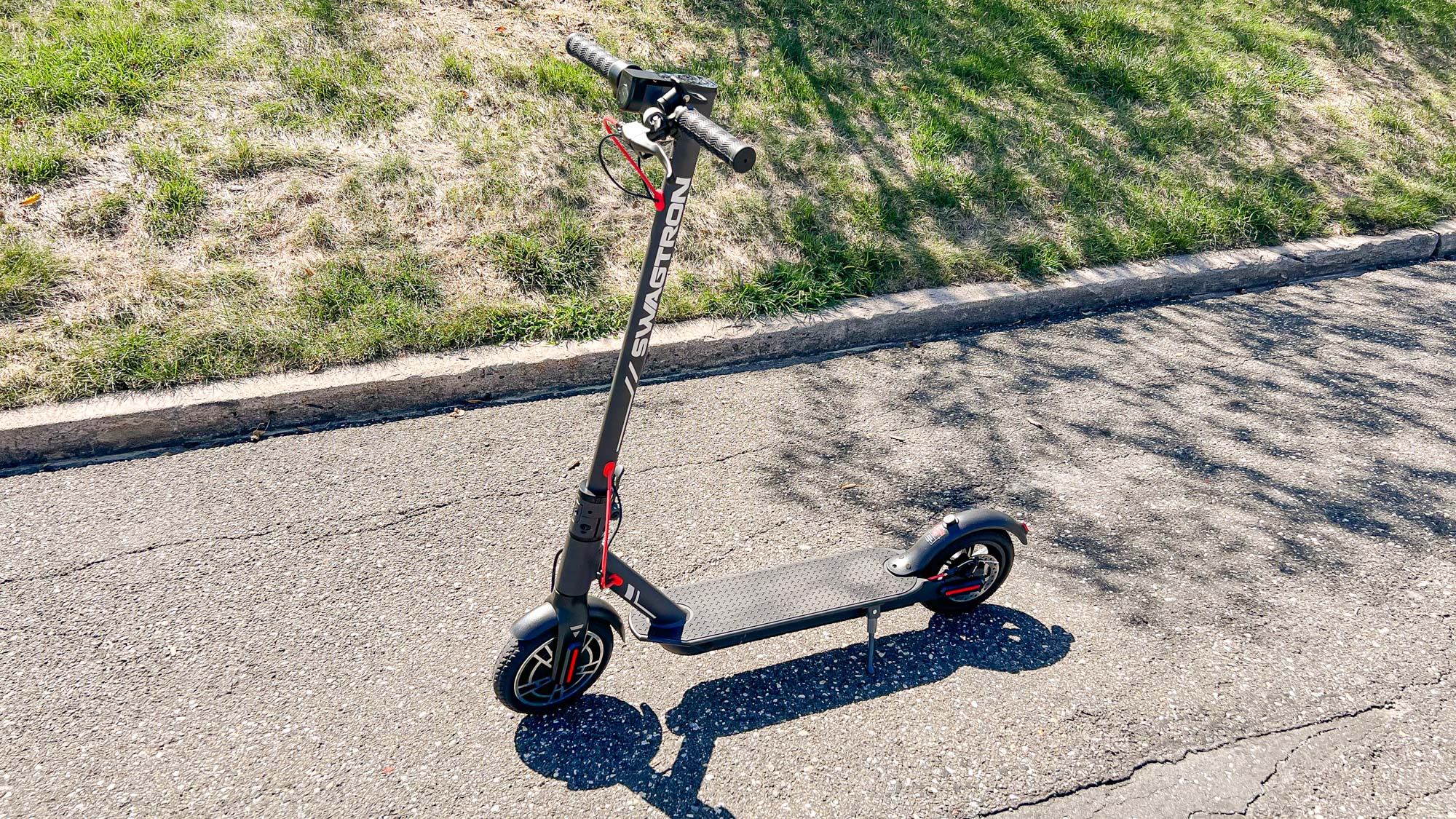
The black aluminum alloy frame is punctuated by silver-gray lettering and red wires. Unlike some brands, the front stem doesn’t hold the battery; it’s located beneath the deck. This can be an issue when you’re going over bumps or potholes, as the battery compartment may get damaged, but it’s a rare occurrence.
Get instant access to breaking news, the hottest reviews, great deals and helpful tips.
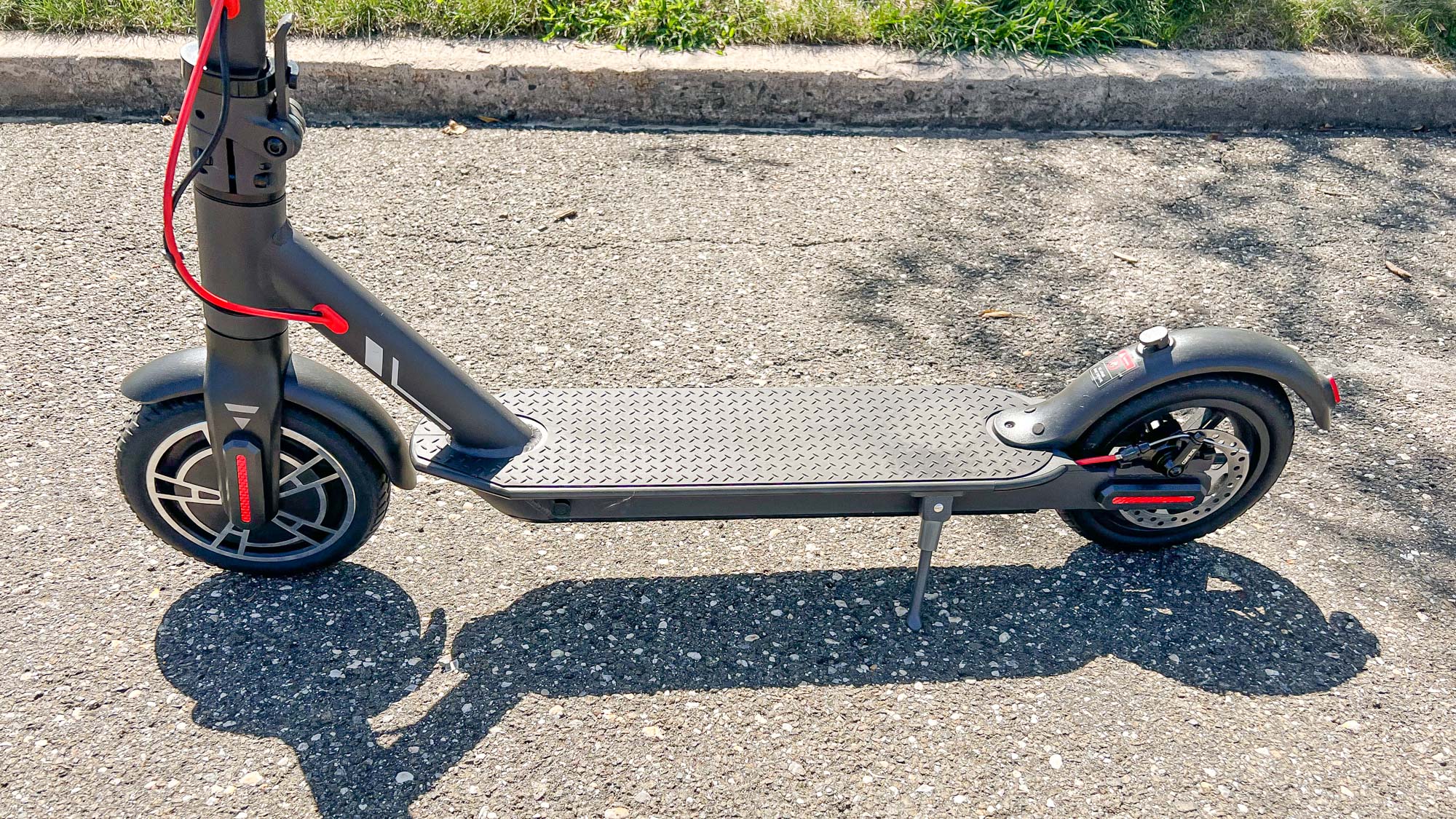
The stem folds down and locks onto the back wheel, so you can stash it in a car trunk or carry it more easily. At 26 pounds, it’s a touch lighter than the GoTrax GXL V2 and even more than my personal e-scooter, the now-unavailable Slidgo X8. The lightweight Boost was easy to get over one step into my apartment, but I’m too much of a weakling to attempt a full flight of stairs.
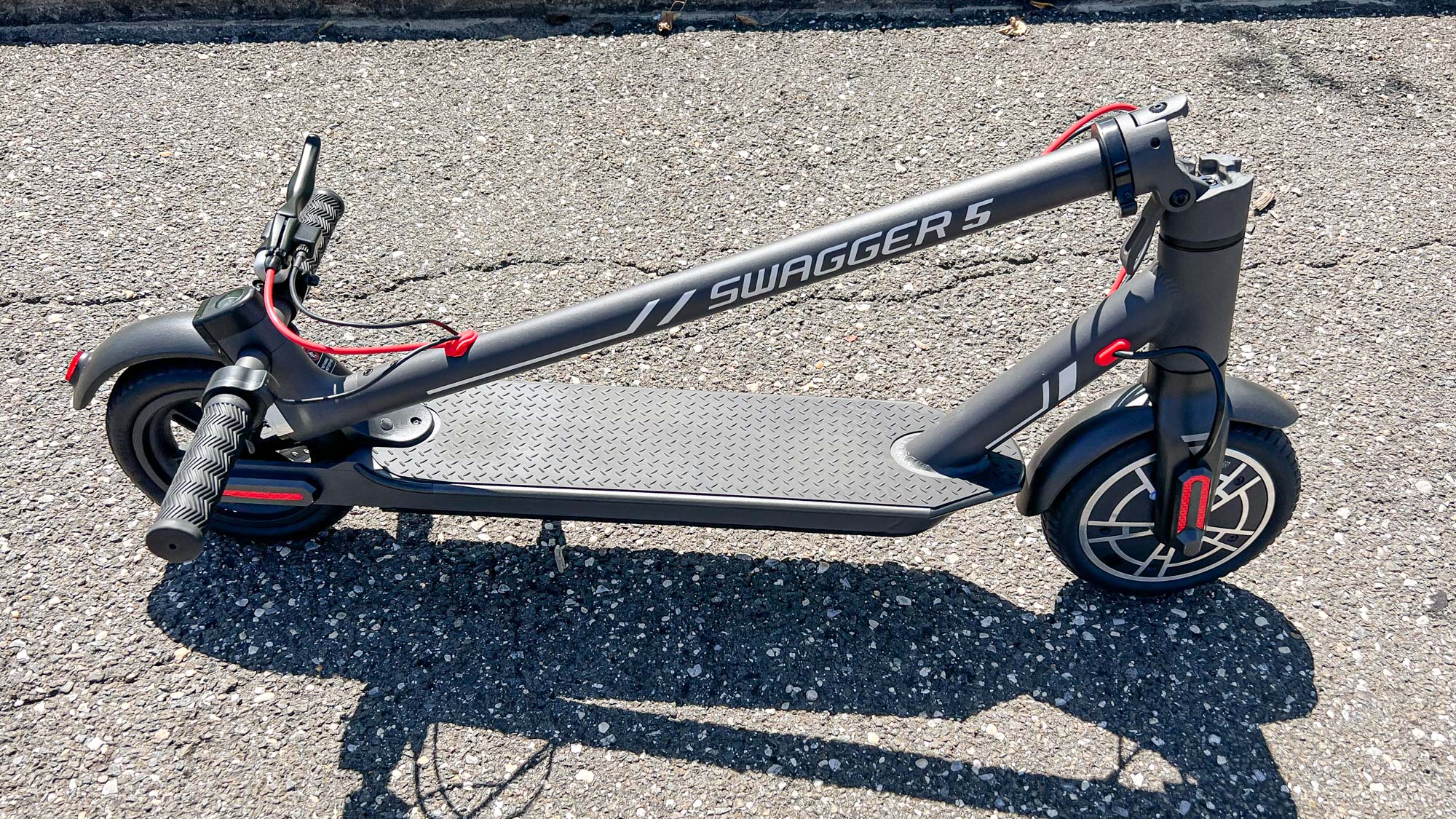
A few cables for the brakes and battery run partially along the stem. I wish they were a bit more tucked away and unobtrusive, as I could envision scenarios where they snag on something in its path.
At the top of the stem are the handlebars and LED display. The left handle is home to a bell, the brake lever controlling the rear disc brakes, and a clip that locks into the rear wheel when the scooter is folded. On the right handle is the accelerator push lever.

The display shows the two most important things you need to know: speed and battery level. The on/off button can also toggle between the Boost’s three speed modes.
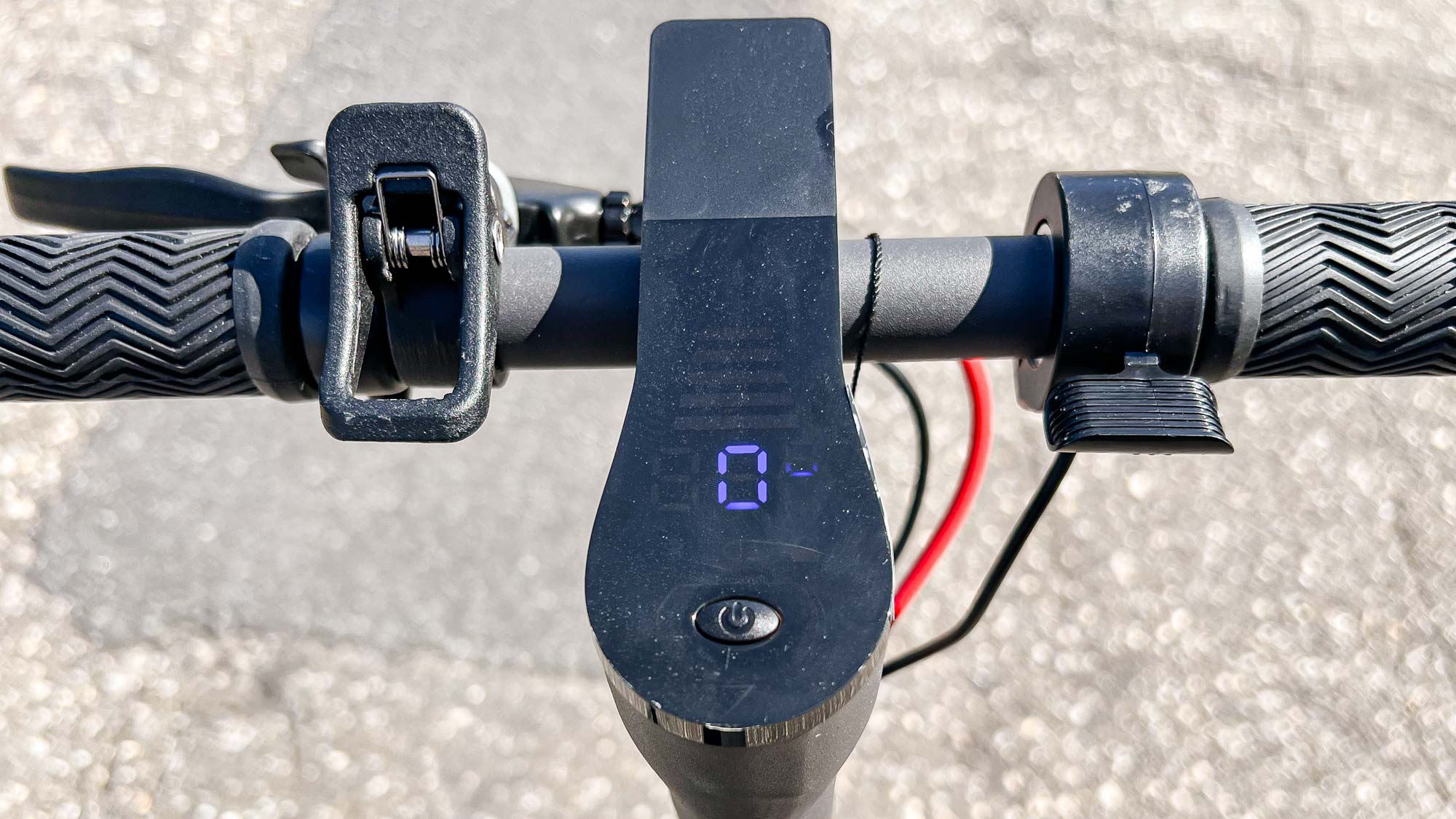
The deck is wide enough for most people, with an IPX4 water resistance rating and decent grip. I still wouldn’t ride it in anything more than a very light drizzle, though. The Boost can carry up to 320 pounds, which is on the heavier side of weight capacity. Of course, higher freights will reduce performance.
One of the biggest upgrades the Boost has over the Elite is the airless honeycomb tires, which the company trumpets as “no flats.” Air provides cushioning, so the solid tires will result in bumpier rides. Since I don’t ride very long distances, I’m fine taking the trade-off and not having to worry about replacing a tire.

One thing the Boost lacks is a rear foot brake, which I love about my Slidgo X8. Well, at least Swagtron doesn’t advertise a foot brake for the Boost. More on that below.
Swagger 5 Boost review: Performance and battery life
While I’m on the lighter side, I live in a very hilly area, so any electric scooter I review will get a thorough performance test up a steep incline. The Swagger 5 Boost performed admirably, hitting 14 mph (about as fast as my Slidgo). On a flat surface, it had no problem achieving its top speed of 18 mph. Acceleration was immediate and powerful. The two lower speeds, first gear and second gear, seem superfluous and I never used them aside from an initial tryout.
The Boost’s honeycomb tires did make for a slightly more rattling ride than electric scooters with pneumatic tires, but it was more than tolerable. If you live in a city like me, you may find yourself riding over more debris like glass, so it was also comforting to know I wouldn’t get a flat or blowout. I rode through a sprinkling and on rain-soaked streets, and found traction to be good.
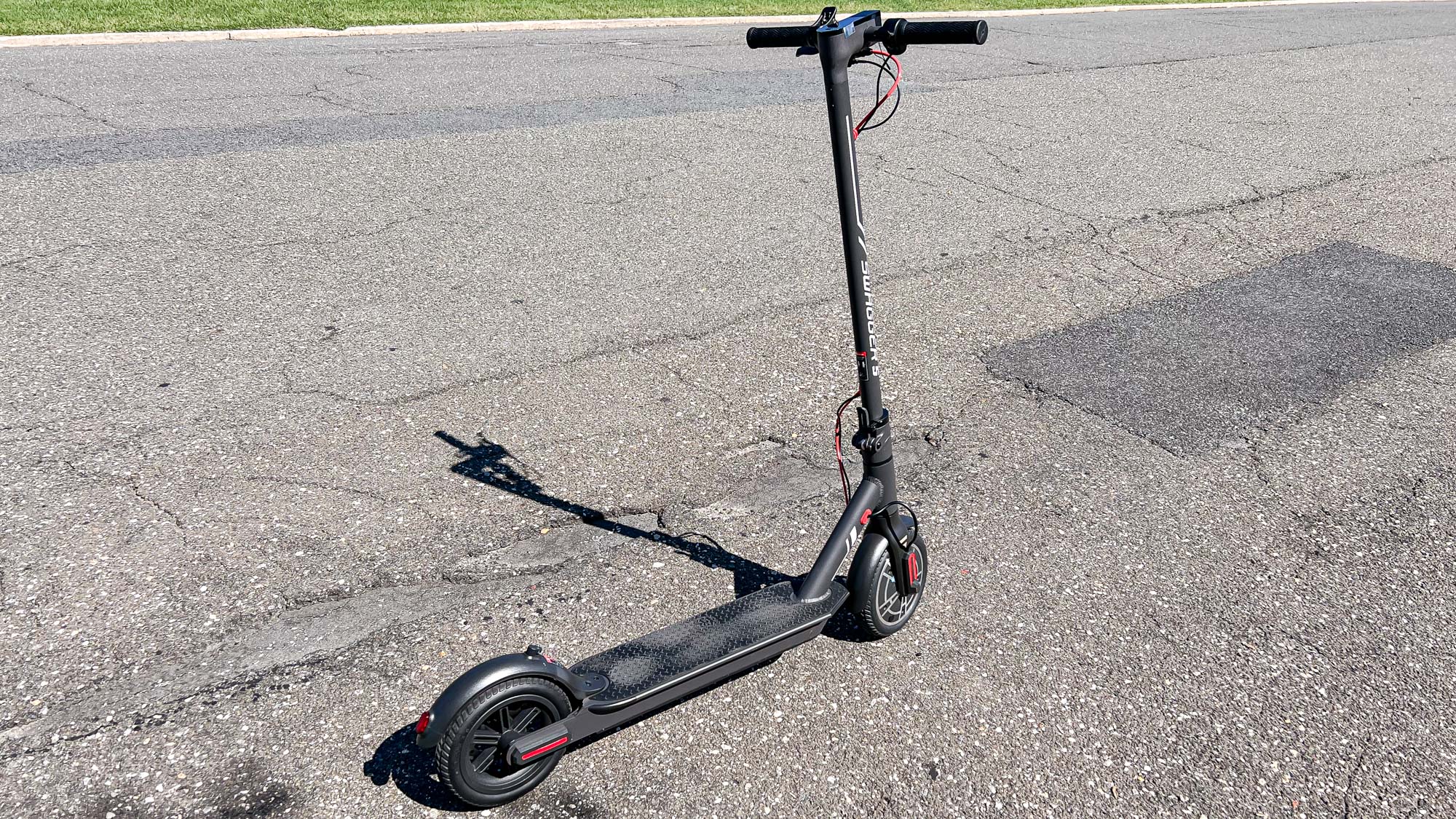
In terms of battery life, a range of 12 miles is on the lower end for even an entry-level commuter scooter. I never had an issue with it, never riding for more than four miles at a time. After at least three of these jaunts, I was pleasantly surprised to find the Swagger 5 Boost was still a quarter charged.
Now, let’s talk about braking. The second-best feature on my Slidgo X8 is the foot brake. Nothing in the Boost’s specs — either on Swagtron’s website or in the materials that came in the box — indicated it had a foot brake. When I first began testing the Boost, I relied only on the hand brake, which honestly, was scary. I performed the speed tests in long, carless, stoplight-less stretches so I could slow down naturally and then apply the hand brake. The few times I rode in bike lanes or streets, I made sure to reduce speed. Even then, anytime I squeezed the lever, I felt like my body might pitch forward over the front of the scooter.

After a week or so, I decided to see what would happen if I just stepped on the back fender. It took a few tries and I had to place my foot farther back than expected, but doing so slowed the scooter more naturally. Is this recommended by Swagtron? Probably not. For the Elite, the company put out a PSA that the rear fender is not a brake: “The rear fender of an electric scooter is likely housing important electrical components, including motor connections or brake light connections. Slamming down on the fender with your foot might damage important wiring components.”
So, maybe I did it wrong, yet I don’t regret acting in a way that makes me feel safer.
Swagger 5 Boost review: Bottom line
Ultimately, I found the Swagger 5 Boost to be a solid, dependable electric scooter that does exactly what it sets out to do: provide an option for commuting and journeying short distances. At less than $400, it’s also affordable for anyone looking for a starter scooter with decent range and speed. Your personal preferences will determine if my issue with the foot brake is a dealbreaker.
If you need to go faster or longer distances, you’ll need to invest in a more powerful, expensive model. But for most people and most purposes, the Swagger 5 Boost is a good option.

Kelly is the managing editor of streaming for Tom’s Guide, so basically, she watches TV for a living. Previously, she was a freelance entertainment writer for Yahoo, Vulture, TV Guide and other outlets. When she’s not watching TV and movies for work, she’s watching them for fun, seeing live music, writing songs, knitting and gardening.

